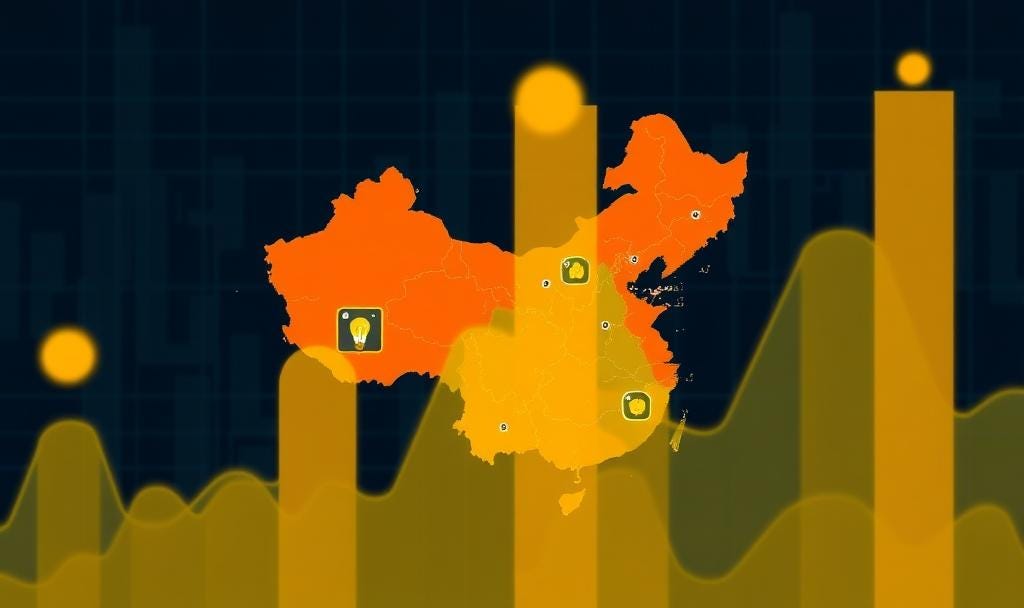ChinaTech - The Chinese Private Sector's Outbound Activities
... and a recommendation for India
This new segment by Shobhankita Reddy is your go-to newsletter for updates and perspectives on China’s tech ecosystem. This edition studies the activities of the Chinese private tech firms and their alignment, specifically the lack thereof, to the Chinese state’s BRI and such directives.
It is fairly well known that Chinese tech firms have a massive global footprint. In 2023, 35% of Alibaba’s global revenue came from international operations, a number that is higher than Amazon’s for a similar time period. Sure, the American consumer market is much deeper than China’s and brutal domestic competition further compounds the problem and curtails their prospects, necessitating foreign expansion of many Chinese firms. But many of these firms have also actively invested significant time, resources and risk in foreign markets. Tencent’s strategic investments in tech and gaming companies globally and Huawei’s robust partnerships in several markets such as South Asia, Europe and Africa with business model adaptations in each, all point to a similar trend. BYD, too, made headlines this February by acquiring lithium mines in Brazil.
It is easy to attribute all foreign expansion activities undertaken by Chinese tech firms to the top-down planning of the Chinese State. The standard narrative is that there is a coordinated, concerted effort and a grand strategy that is Beijing’s brainchild. China’s Belt and Road Initiative, specifically its banner of “Digital Silk Road” (DSR), gets cited frequently to justify that Chinese tech firms are essentially an extension of the Chinese government.
However, this is an oversimplification at best and needs a deeper study. Yujia He’s paper pertaining to this has some revealing takeaways.
the Chinese state aims to achieve five policy objectives through DSR: cutting industrial overcapacity in both the ICT sector and the broader economy, enabling Chinese firms’ global expansion, supporting the internationalization of the Chinese currency (RMB), constructing a China-centered transnational network infrastructure, and promoting its vision of Internet-enabled inclusive globalization.
She posits that state-centric perspectives neglect the agency and commercial incentives of Chinese private tech firms. Yes, the political rhetoric of DSR is loud but an on-the-grounds report of the activities, policy implementations and choices reveals a pursuit of business interests that balances their independence with an alignment to government’s directives. They tend to opportunistically champion BRI/ DSR when it suits their profit motives and cautiously distance themselves from it when faced with suspicion of the Chinese government. The result is that their activities get conveniently subsumed into the BRI narrative, when in reality the two have a very low overlap.
While a lot of study is focused on Chinese telecom infrastructure projects such as fiber-optic cable construction, network equipment, 5G, and satellite networks, less attention is paid to other DSR sectors such as artificial intelligence, cloud computing, smart cities, the Internet of Things, financial technologies (fintech), social networking, blockchain, online entertainment, animation, online games that are dominated by private sector firms.
Previous editions of this newsletter have touched upon the difficulties faced by the private sector in China, which is a sharp contrast to the preferential treatment enjoyed by SOEs, despite the private sector being the engine of China’s technological growth.
He’s paper reiterates that the Chinese private-sector firms and State-Owned Enterprises (SOEs) should not be looked upon as a monolith.
Compared to most SOEs that have large resource bases and enjoy high levels of government financial support and a protectionist policy environment, most Chinese Private Owned Enterprises (POEs) face an unfavorable domestic institutional environment, operate in highly competitive markets, and expand overseas with the intention to seek new markets or strategic assets like technology and brands (Huang and Chi 2014). Unlike SOEs that have access to preferential financing from Chinese banks, POEs tend to expand overseas using their own capital and profit, raise capital through international markets, or with private equity funds (Sutherland and Ning 2011).
Foreign capital in these firms means that they are subject to international oversight with implications for how they are run, the strategies they employ and the choices they make.
This is not to say that Chinese POEs are no threat to the local economies they endeavour into. The Xi Jinping administration has enacted multiple national security laws which when employed together obligates these firms to offer Chinese intelligence agencies access to their data and operations, when called upon. Also, POEs in China, are victims of what is called “Hunger Games Capitalism” and engage in battles between themselves, further weakening their ability to unite against their government.
e.g., ByteDance’s lawsuit alleging that Tencent's WeChat and QQ messaging apps ban their users from sharing content from Douyin, the Chinese version of short-form video app TikTok owned by ByteDance (He 2021).
However, it would be erroneous to overstate the reach of the Chinese government here.
This is because Chinese POEs have a complex relationship with the state, astutely navigating Beijing’s regulatory landmine while engaging in high risk-taking outside China’s borders. BYD’s acquisition of mines in BRI countries has less to do with the BRI strategy but more to do with the vertical integration of its business model - securing a reliable supply of raw materials to meet the growing demand for its product exports while controlling its input costs.
This nuanced take on the activities of Chinese POEs supports the views previously expressed by Pranay Kotasthane that outside of a select few strategic sectors, the presence of Chinese firms in India is a net positive for India. He also argues that we need a better definition of what constitutes ‘strategic’. Do read his analysis in full here and here.





